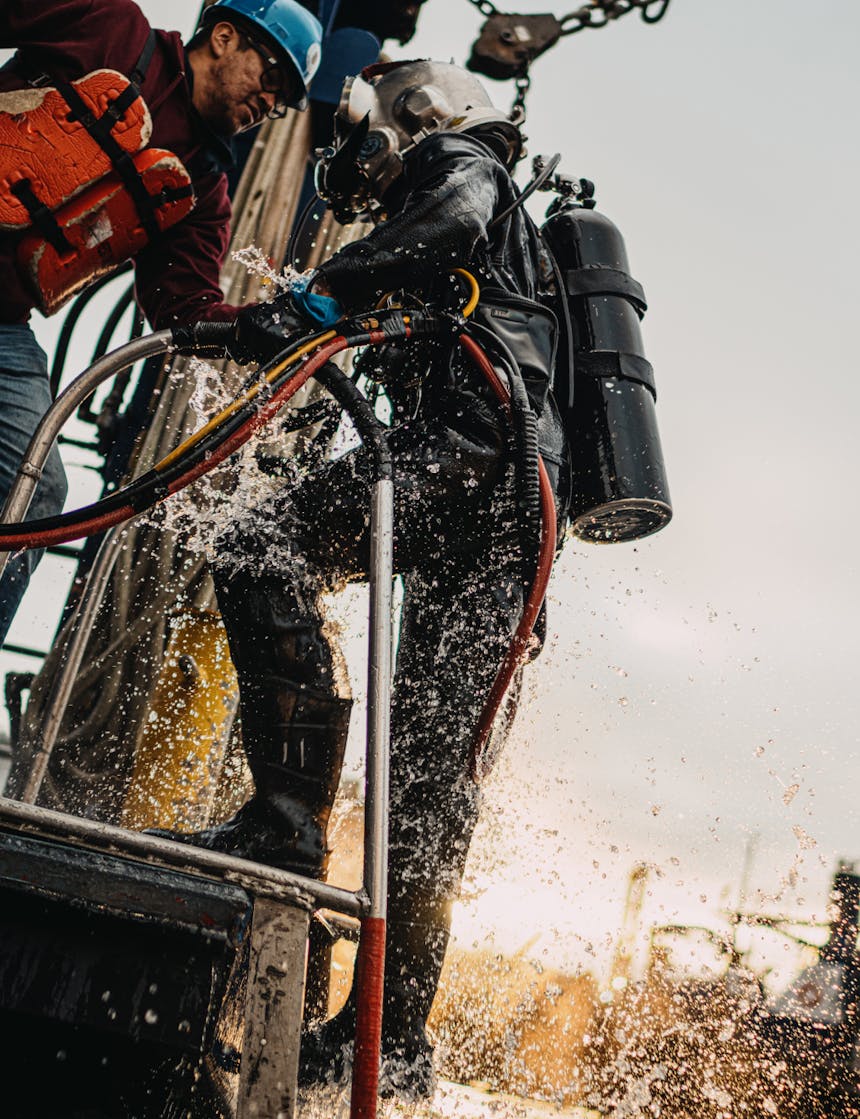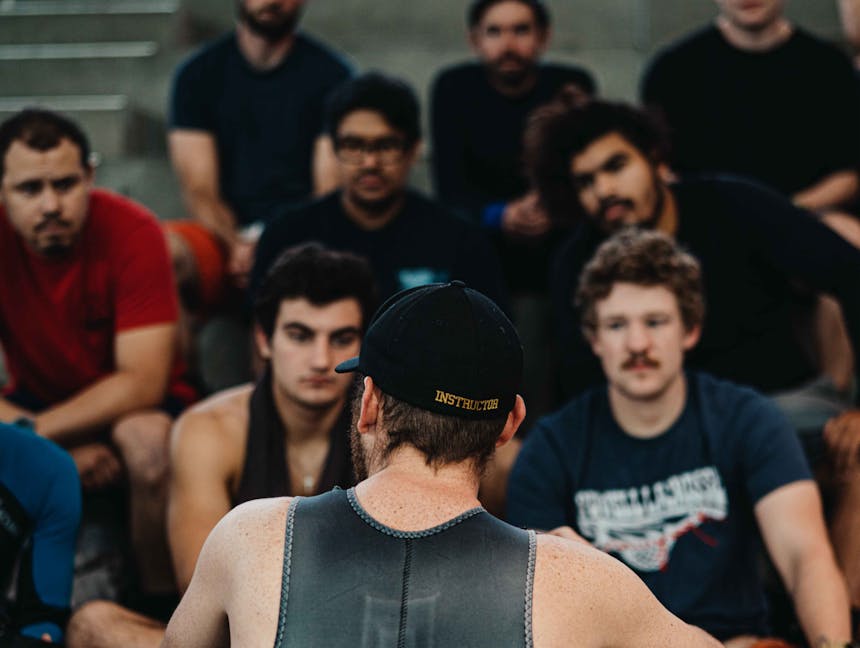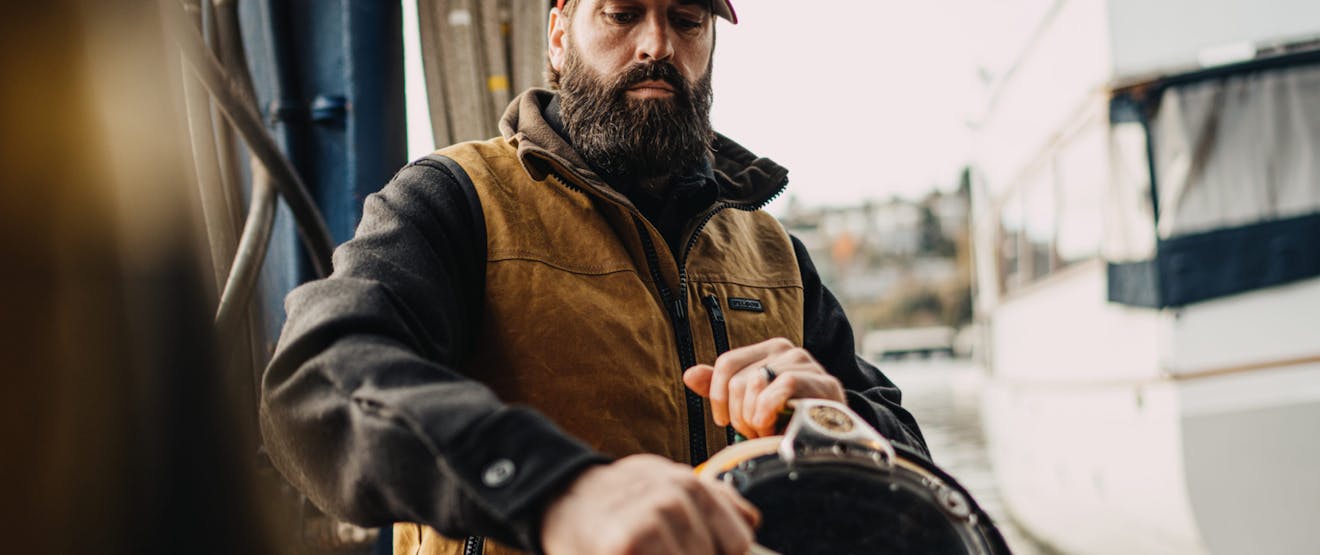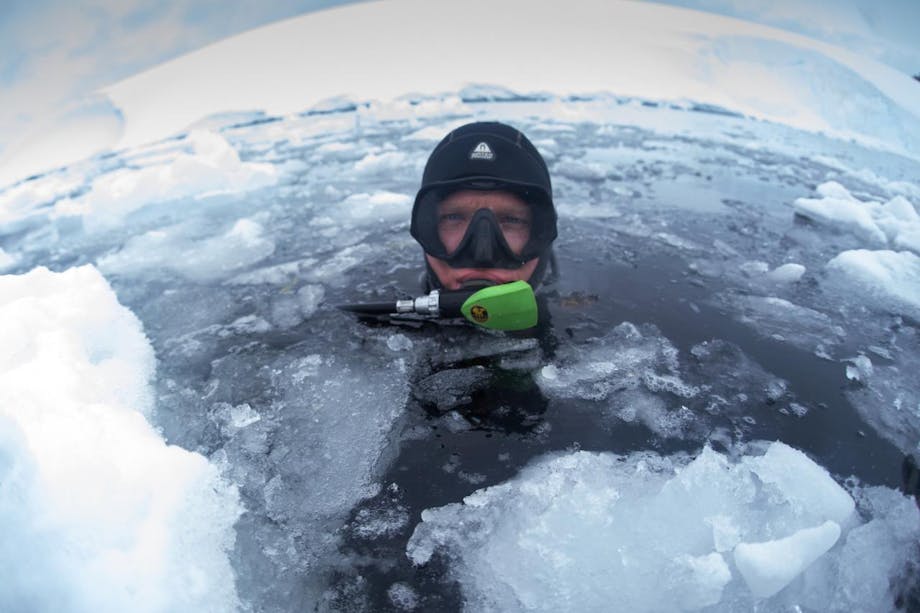It’s early morning on Lake Union, in the heart of Seattle, and all around it, the city is waking up to a cool winter morning. But while everyone else is wiping the sleep from their eyes, a group of students from the Divers Institute of Technology (DIT) is prepping for their latest assignment, the successful salvage of a sunken vessel sitting on the bottom of the lake. They have spent two long weeks creating their salvage plan to successfully refloat the boat, one that will be sunk again when they are finished, and they know that they have a long day ahead. But that’s the life of a commercial diver, something all of them are training to become one day soon.
Two divers in their dry suits, wearing 40 pounds of weight in their dive harnesses, head to the barge’s edge. The umbilical hose connected to the Superlite dive helmet will supply them with fresh air and a communications link to the surface. Plus, the top-mounted camera will allow their instructors on the barge to monitor them from the surface. After a few more words with their other teammates, they head over the edge, enter the water, leave the surface, and the clock starts ticking.


As they head to the bottom, a silty murkiness envelopes them, and visibility rapidly reduces to just a few feet. The world goes dark, and they get to work, ever mindful that they are in an alien environment that humans aren’t designed to be in. For the next ninety minutes per dive team, they will use their minds as much as their bodies.
“If you’re going to be a successful commercial diver, you got to be smart because you can’t muscle around a ninety-pound jackhammer for long periods underwater; there’s just no human that’s going to be able to do that,” says Sean Day, an instructor at DIT. “You must figure out how to correctly leverage the tools with riggings, slings, and rachets. Everything underwater is a puzzle you must work to solve in the easiest and most effective way possible.”
The Divers Institute of Technology was founded in 1968 and is one of the premier commercial diving schools in the world. A Veteran owned and operated business since its founding, it has acted as an entryway into the high-stakes world of commercial underwater diving. Its graduates have worked on all seven continents; these days, nearly 50% of its students are military veterans who use the GI Bill to chase a dream.
“A lot can go dangerously wrong quickly underwater if you’re not prepared. You're in a hostile environment not designed for humans to work in...They must learn how to work through everything in real-time and, most importantly, keep their cool, to not panic.”
Following a highly structured and rigorous seven-month training program, its attendees learn every aspect of the industry. When they graduate, they can operate underwater hydraulic equipment like jackhammers, impact drills, and chainsaws deep underwater while coping with ever-changing currents and conditions. Students must achieve at least 3,000 minutes of “bottom time” split up with 600 minutes in scuba and 2,400 in a deep water diving suit. When they are not in the water, they are in classrooms learning how to cope with the challenges they will encounter.
“A lot can go dangerously wrong quickly underwater if you’re not prepared. You’re in a hostile environment not designed for humans to work in,” says Dan Henderson, an instructor at DIT. “Our job is to drill into each of our students that they need to run every scenario on paper before going into the water so they come back up if things go sideways. They must learn how to work through everything in real-time and, most importantly, keep their cool, to not panic.”

One of the biggest challenges every student must face is how they react in the deep. While many locations they may work in across the globe might offer clear visibility, just as many don’t. That is why the school works in shallow Lake Union and deeper Lake Washington. Both lakes provide changing currents and conditions, and due to their silty bottoms, murky conditions where you can struggle to see anything.
“As a commercial diver, you get very spatially aware and learn how to see with your hands. Because when visibility is truly zero and you can’t even see your fingers when you touch your face plate, you have to feel with your hands,” says Day. “Divers have to know how to do jobs with their eyes closed, basically.”
By the time they graduate, each diver will be fully certified and will have worked at 165 feet below the surface. As they progress, they learn how crucial it is to preplan each dive and have redundancies in place to deal with anything. Communication with the surface is paramount, especially when you spend significant time underwater. If that is severed, everything is paused until it is restored. No diver is alone. When you are working on cutting a rotten dock pile out in rough seas or welding a broken spar on an oil rig in the middle of the ocean, danger is always lurking. Divers Institute of Technology ensures that its graduates are prepared for anything.
“Everything slows down subsurface. But commercial divers must be able to process information just as fast as on the surface, if not even faster, says Henderson. “That’s just the nature of the work because you’re in a very dynamic environment that we’re really not supposed to be in, to begin with, working with complex equipment and machinery.”


After four hours and multiple dive teams, the rusty hull of the sunken boat begins to break the surface. The two salvage pontoons secured to the vessel’s side break the surface first. As the water boils around it, the barge pulls close, and two students operating the trash pumps begin to pump the water out of the hull. Off to the side, the two students who finished the underwater part of the project, which was handed off to them from the first team in the water, are helped back aboard by their tenders, also students. They begin to peel off their gear with worn-out smiles; their team has done it. They have passed another threshold, and the prospect of starting their new careers seems much brighter. It’s been a long day, but they won’t ever forget.






